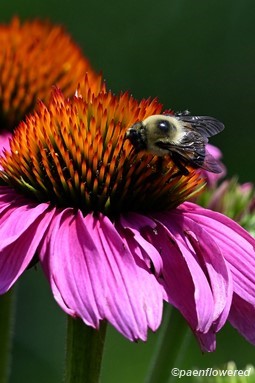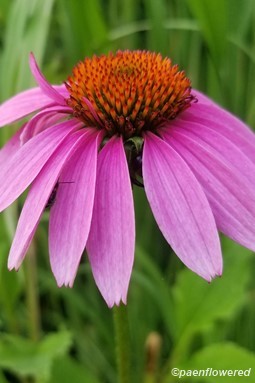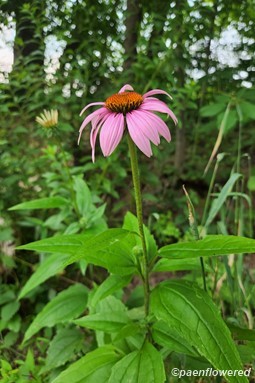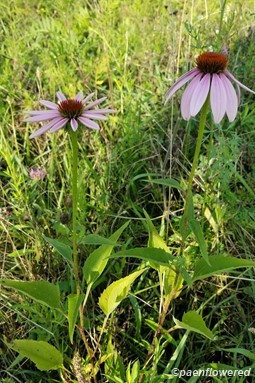Echinacea purpurea
Mostly found in cultivated form, sometimes becoming naturalized
Echinacea purpurea purple coneflower
Like most members of the aster family this species has a composite flower made of many central disk florets and several petal-like ray florets. Each floret has both male and female parts. The flower is notable because of the purple-pink drooping ray florets around a spiny, domed yellow-brown central disc. The individual flower head is 2 ½ to 4 in. wide and is long-lasting. The genus name is derived from the Greek word "echino" which means hedgehog, referring to the spiny central disc. The flowers are long-lasting.
The ovate leaves have 3-5 major veins and toothed edges. The lower leaves have long petioles. The stem is rough and hairy. The Eastern purple coneflower blooms from late June to October. It can be found in dry open woods and prairies and grows to a height of 2-3 feet. It is easily grown as a garden plant and in suburban areas is more common in cultivated than in wild form. It tolerates either full sun or part shade. Bees and butterflies are the major pollinators, while slugs and several species of caterpillars will feed on the plant and damage the flowers.
The flowers can be used to make a popular herbal tea purported to strengthen the immune system. Extracts of the plant are also sold as tablets in health food stores with many claims for healthful benefits. Experimental evidence of medicinal benefit of coneflowers has yet to be demonstrated by consistent, large, and properly controlled studies. Numerous allergic reactions and adverse side effects have been reported.
Habitat & Range
Escapes from cultivation to meadows and fields, occasionally forest edges.
Wetland code: Not classified
Phenology
Flowers July through October.
Plant Codes
S-rank: No rank
G-rank: G4 (Apparently secure)








Comments
Have you spotted this plant in your area? We'd love to hear about your experience! Share your comments or questions about the plant below. Comments are moderated before posting.